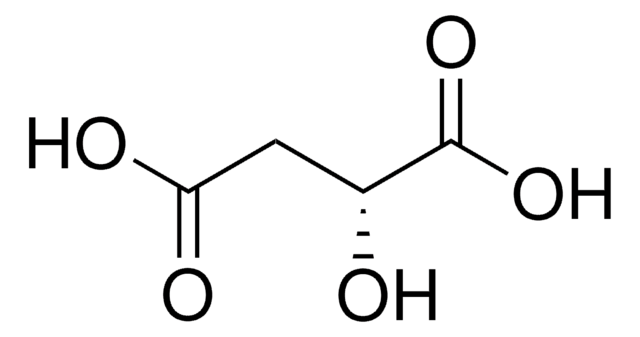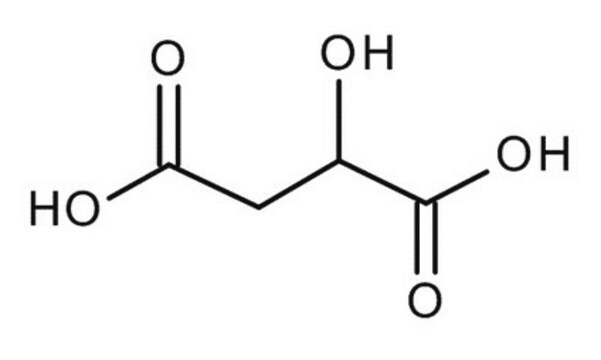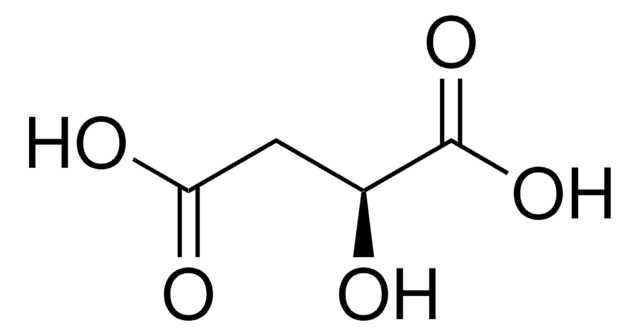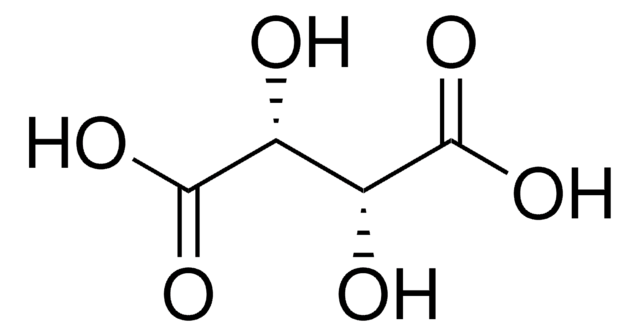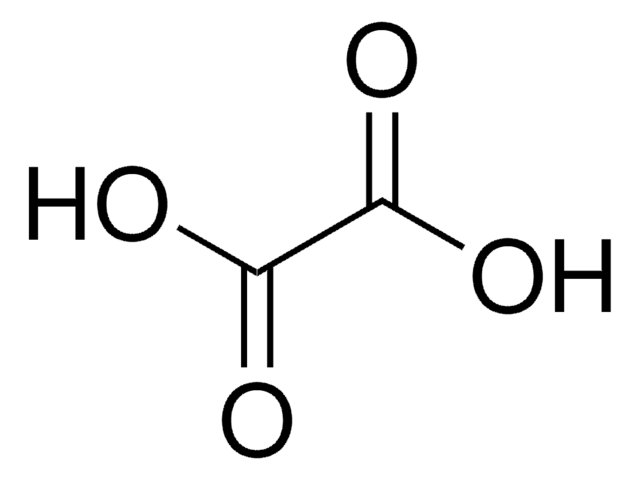94916
DL-Malic acid
analytical standard
Sinónimos:
(±)-2-Hydroxysuccinic acid, DL-Hydroxybutanedioic acid
About This Item
Productos recomendados
grado
analytical standard
Nivel de calidad
densidad de vapor
4.6 (vs air)
presión de vapor
<0.1 mmHg ( 20 °C)
temp. de autoignición
644 °F
caducidad
limited shelf life, expiry date on the label
concentración
95.0-105.0 wt. % (NaOH 0.1M, Titration)
técnicas
HPLC: suitable
gas chromatography (GC): suitable
mp
131-133 °C (lit.)
solubilidad
H2O: soluble 646.6 g/L at 20 °C
aplicaciones
cleaning products
cosmetics
flavors and fragrances
food and beverages
personal care
Formato
neat
temp. de almacenamiento
2-8°C
cadena SMILES
OC(CC(O)=O)C(O)=O
InChI
1S/C4H6O5/c5-2(4(8)9)1-3(6)7/h2,5H,1H2,(H,6,7)(H,8,9)
Clave InChI
BJEPYKJPYRNKOW-UHFFFAOYSA-N
¿Está buscando productos similares? Visita Guía de comparación de productos
Categorías relacionadas
Descripción general
Find all available reference materials for compounds listed in 10/2011 here
Aplicación
Palabra de señalización
Warning
Frases de peligro
Consejos de prudencia
Clasificaciones de peligro
Eye Irrit. 2
Código de clase de almacenamiento
11 - Combustible Solids
Clase de riesgo para el agua (WGK)
WGK 1
Punto de inflamabilidad (°F)
397.4 °F
Punto de inflamabilidad (°C)
203 °C
Elija entre una de las versiones más recientes:
Certificados de análisis (COA)
¿No ve la versión correcta?
Si necesita una versión concreta, puede buscar un certificado específico por el número de lote.
¿Ya tiene este producto?
Encuentre la documentación para los productos que ha comprado recientemente en la Biblioteca de documentos.
Los clientes también vieron
Protocolos
Separation of Pyruvic acid, United States Pharmacopeia (USP) Reference Standard; Tartaric acid, United States Pharmacopeia (USP) Reference Standard; Citric acid, United States Pharmacopeia (USP) Reference Standard; Malic acid, United States Pharmacopeia (USP) Reference Standard; L-Pyroglutamic acid, ≥99.0% (T); Lactic acid, United States Pharmacopeia (USP) Reference Standard; Acetic acid, ≥99.99% trace metals basis; Succinic acid, United States Pharmacopeia (USP) Reference Standard
Nuestro equipo de científicos tiene experiencia en todas las áreas de investigación: Ciencias de la vida, Ciencia de los materiales, Síntesis química, Cromatografía, Analítica y muchas otras.
Póngase en contacto con el Servicio técnico
